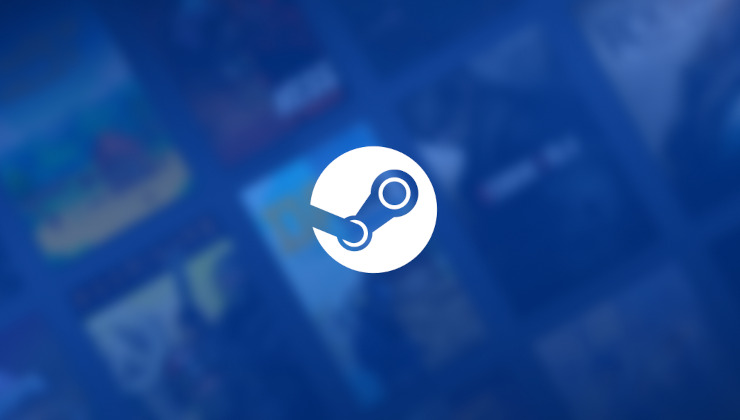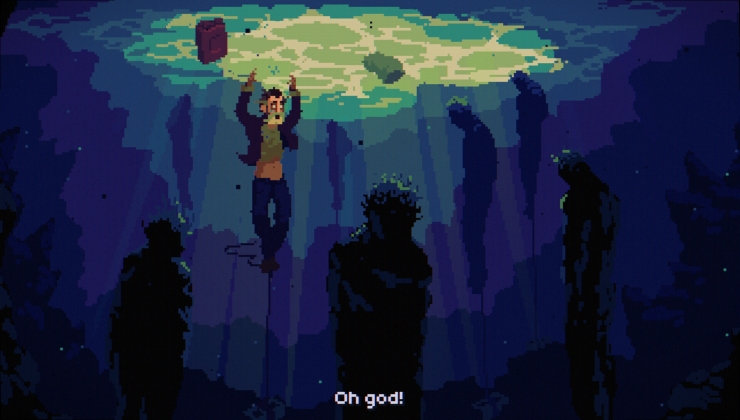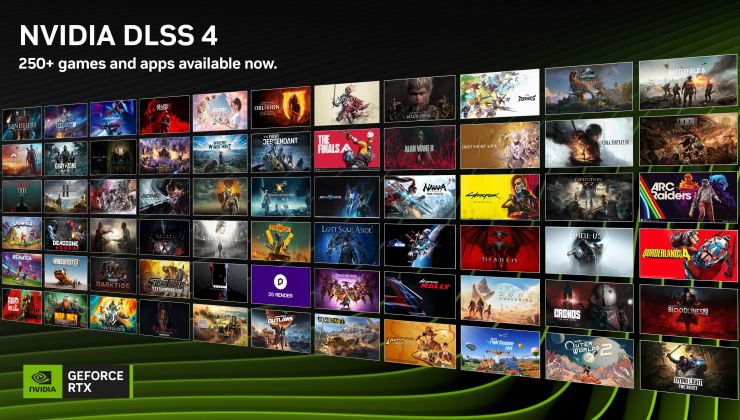Following on from the NVIDIA Beta 495.29.05 earlier this month, today NVIDIA has a fresh 495.44 stable driver release that builds upon it with some additional extras. This is the big one for Wayland fans, since it now works with the GBM API.
With this API now hooked up, it should mean a better Wayland experience and it's something that the KDE Plasma team are already working on supporting too.
You will also find in this release an indicator (on supported desktops) for showing Resizable BAR and the minimum Kernel version got bumped from 2.6.32 to 3.10. Additionally these new extensions are supported:
- VK_KHR_present_id
- VK_KHR_present_wait
- VK_KHR_shader_subgroup_uniform_control_flow
- EGL_NV_robustness_video_memory_purge
There's also a healthy dose of bug fixes and other changes noted below:
- Fixed a bug that could cause the X server to crash when starting a new server generation on PRIME configurations.
- Removed support for NvIFROpenGL. This functionality was deprecated in the 470.xx driver release.
- Removed libnvidia-cbl.so from the driver package. This functionality is now provided by other driver libraries.
- Updated nvidia.ko to load even if no supported NVIDIA GPUs are present when an NVIDIA NVSwitch device is detected in the system. Previously, nvidia.ko would fail to load into the kernel if no supported GPUs were present.
- Fixed a bug in the Vulkan driver where unused input attributes to a vertex shader would corrupt the interpolation qualifiers for the shader.
- Fixed a bug in the Vulkan driver where individual components of barycentric inputs could not be read.
- Fixed a bug where VK_NVX_binary_import was advertised as supported on unsupported platforms. This caused calls to vkCreateDevice to fail if applications attempted to enable VK_NVX_binary_import on such platforms.
- Added a new command line option, "--no-peermem", to nvidia-installer.Selecting this option prevents the installation of the nvidia-peermem kernel module.
- Fixed a regression which prevented DisplayPort and HDMI 2.1 variable refresh rate (VRR) G-SYNC Compatible monitors from functioning correctly in variable refresh rate mode, resulting in issues such as flickering.
- Fixed a bug that can cause a kernel crash in SLI Mosaic configurations.
Since this is a stable driver release all users should be okay to upgrade.
Some you may have missed, popular articles from the last month:
All posts need to follow our rules. Please hit the Report Flag icon on any post that breaks the rules or contains illegal / harmful content. Readers can also email us for any issues or concerns.
And I would like to welcome the Nvidia users friends to the wayland side of the force :smile:
I hope now the Linux Mint devs can stop pretending that Wayland is not a thing.
I hope now the Linux Mint devs can stop pretending that Wayland is not a thing.
8 Likes
Wow, I'm not an Nvidia user myself so that's not my own problem, but how many years the GBM support has been missing, [5½ years](https://www.phoronix.com/scan.php?page=news_item&px=Streams-vs-GBM-Toolkits)? It looks like Nvidia lost the arm wrestling…
1 Likes
Meanwhile we lost support for kepler gpu. I would buy a new gpu if the prices where "normal".
Hope they keep support on a legacy driver.
Hope they keep support on a legacy driver.
1 Likes
Quoting: BielFPsAnd I would like to welcome the Nvidia users friends to the wayland side of the force :smile:You say that like everyone else has adopted it, and it's the new standard...? As far as I know Ubuntu, Debian, Fedora and OpenSuse do now default to Wayland, but it's not like it's used everywhere by any stretch. I'm on Pop 21.04 and there's no Wayland here. And don't KDE still have a few kinks to work out with Wayland?
I hope now the Linux Mint devs can stop pretending that Wayland is not a thing.
It feels like the technology that's permanently "just around the corner". I just wish it had some kind of selling point - something that made me want to try it, other than vague "better architecture" back-end stuff that I'm meant to care about, but don't, on my single-user system. Instead, there's a list of quirks relating to screen sharing, keyboard overlays, proprietary apps and Nvidia or KDE incompatibilities.
It does feel like there's some momentum at long last though.
4 Likes
This is a blow to my poor gtx660.
no wayland and probably no more gaming :cry: (470 is the last proprietary driver for me)
no wayland and probably no more gaming :cry: (470 is the last proprietary driver for me)
4 Likes
Quoting: scaineIt feels like the technology that's permanently "just around the corner". I just wish it had some kind of selling point - something that made me want to try it, other than vague "better architecture" back-end stuff that I'm meant to care about, but don't, on my single-user system.In principle, the idea is that you'd get better performance (you save a round trip between the display server and the compositor if your compositor is your display server), much better security, and ditch a bunch of cruft so maintaining it is way easier and bugfixes can happen more quickly. In practice, the spec was rather half-baked, relied on everyone having to independently reinvent the wheel, and gave Gnome devs an excuse for their CSD lunacy, and it's only now (years later) getting to the point that it's a moderately viable replacement for what we had before.
4 Likes
Quoting: scaineYou say that like everyone else has adopted it,X.org developers adopted it, that's enough for me
Quoting: scaineand it's the new standard...?It should already be, Nvidia drivers was the biggest hurdle in this story, but now that they're (somewhat) supporting gbm, things should go faster from now on (including bug fixes / missing features).
Quoting: scaineI'm on Pop 21.04 and there's no Wayland here.I'm personally not familiar with Pop OS (I thought it was just another Ubuntu fork with a modified gnome and a easy nvidia installer, but I'm probably wrong) but I bet it is because of Nvidia drivers too. If that's the case, it may come once they rebase with Ubuntu 22.04.
Quoting: scaineIt feels like the technology that's permanently "just around the corner". I just wish it had some kind of selling point - something that made me want to try it, other than vague "better architecture" back-end stuff that I'm meant to care about, but don't, on my single-user system. Instead, there's a list of quirks relating to screen sharing, keyboard overlays, proprietary apps and Nvidia or KDE incompatibilities.That's the unfortunately bad side of anything new in technology, not everything comes in stable packages and sometimes it requires a lot of different variables that can take a lot of time.
The good side is that you're not "forced" to use it right now if you don't want, but I'm happy that those who want to and were limited by it can now try it and maybe help to improve it, in order to make wayland feel like it "earned" the title of X11 replacement.
EDIT: So I've done a little research about Pop OS and they're from the same company that [sells notebooks with Nvidia hardware](https://system76.com/laptops/oryx), so they're in the same boat of Mint developers with [their mint boxes](https://fit-iot.com/web/product/mintbox3-pro/)
Last edited by BielFPs on 27 Oct 2021 at 4:30 pm UTC
0 Likes
Quoting: scaineKinda difficult to implement new defaults when the industry jerk makes lobby for their own problematic solution and blocks the development of any open source alternative.Quoting: BielFPsAnd I would like to welcome the Nvidia users friends to the wayland side of the force :smile:You say that like everyone else has adopted it, and it's the new standard...? As far as I know Ubuntu, Debian, Fedora and OpenSuse do now default to Wayland, but it's not like it's used everywhere by any stretch. I'm on Pop 21.04 and there's no Wayland here. And don't KDE still have a few kinks to work out with Wayland?
I hope now the Linux Mint devs can stop pretending that Wayland is not a thing.
It feels like the technology that's permanently "just around the corner". I just wish it had some kind of selling point - something that made me want to try it, other than vague "better architecture" back-end stuff that I'm meant to care about, but don't, on my single-user system. Instead, there's a list of quirks relating to screen sharing, keyboard overlays, proprietary apps and Nvidia or KDE incompatibilities.
It does feel like there's some momentum at long last though.
4 Likes
Quoting: scaineIt feels like the technology that's permanently "just around the corner". I just wish it had some kind of selling point - something that made me want to try it, other than vague "better architecture" back-end stuff that I'm meant to care about, but don't, on my single-user system. Instead, there's a list of quirks relating to screen sharing, keyboard overlays, proprietary apps and Nvidia or KDE incompatibilities.- Fractional scaling and diferent scaling on multi-monitors at least in gnome require Wayland
- Gamescope - even if you run it in an X session, it is a wayland compositor
- Active developers that fix upcoming issues
Maybe none of these apply to you, but to other end users, they do.
3 Likes
Quoting: minfaer- Fractional scaling and different scaling on multi-monitors at least in gnome require WaylandIs that a limitation only with Nvidia?
Last edited by dubigrasu on 26 Oct 2021 at 7:20 pm UTC
0 Likes
Quoting: TorqachuThis is a blow to my poor gtx660.Running 470 here as well. I do have a 2080 but watched a few tutorials on installing 495 and not sure i'm ready to take that plunge.
no wayland and probably no more gaming :cry: (470 is the last proprietary driver for me)
0 Likes
Quoting: dubigrasuNo, it's purely Xorg vs Wayland. [See the arch wiki describing how to potter around this.](https://wiki.archlinux.org/title/HiDPI#Xorg)Quoting: minfaer- Fractional scaling and different scaling on multi-monitors at least in gnome require WaylandIs that a limitation only with Nvidia?
1 Likes
This is exciting, hopefully i can make the full switch to wayland to avoid those fustrating X issues i have been having with my weird multi monitor setup! :tongue:
0 Likes
I was waiting for Wayland to work on my Nvidia card, and now there is a possibility that my card is too old :/ I had Kepler GTX660ti and later I upgraded to GTX970 on maxwell, but looking at how slow it takes to get any support on NVIDIA I'm skeptical. Is it the same with AMD GPUs?
0 Likes
Quoting: minfaerHuh, is not something that I frequently use, but it works OK here by default.Quoting: dubigrasuNo, it's purely Xorg vs Wayland. [See the arch wiki describing how to potter around this.](https://wiki.archlinux.org/title/HiDPI#Xorg)Quoting: minfaer- Fractional scaling and different scaling on multi-monitors at least in gnome require WaylandIs that a limitation only with Nvidia?
I have Gnome 3.36.8, two monitors on Xorg, one at 175% and the other at 150%.
0 Likes
Quoting: dubigrasuThat's interesting, I remember a Gnome dev writing that they cant implement it on X. What distro is it? And are you sure it's X (as inQuoting: minfaerHuh, is not something that I frequently use, but it works OK here by default.Quoting: dubigrasuNo, it's purely Xorg vs Wayland. [See the arch wiki describing how to potter around this.](https://wiki.archlinux.org/title/HiDPI#Xorg)Quoting: minfaer- Fractional scaling and different scaling on multi-monitors at least in gnome require WaylandIs that a limitation only with Nvidia?
I have Gnome 3.36.8, two monitors on Xorg, one at 175% and the other at 150%.
echo $XDG_SESSION_TYPE )?Quoting: FlapI was waiting for Wayland to work on my Nvidia card, and now there is a possibility that my card is too old :/ I had Kepler GTX660ti and later I upgraded to GTX970 on maxwell, but looking at how slow it takes to get any support on NVIDIA I'm skeptical. Is it the same with AMD GPUs?If you mean for wayland: no, that has been running fine for years.
If you mean in general: There are ups and downs. Freesync over HDMI for example took forever...
Last edited by minfaer on 26 Oct 2021 at 9:49 pm UTC
0 Likes
Quoting: minfaer- Gamescope - even if you run it in an X session, it is a wayland compositorGamescope does not need GBM and could have worked since 470, but Nvidia driver still needs support for VK_EXT_image_drm_format_modifier, which is not Wayland or GBM specific.
0 Likes
Quoting: x_wingI have no idea what you're talking about here. Nvidia blocked something... how? Or is this tired old "Mir" argument, in which I'm sick of hearing it, since, after all, competing standards literally defines what Linux is.Quoting: scaineKinda difficult to implement new defaults when the industry jerk makes lobby for their own problematic solution and blocks the development of any open source alternative.Quoting: BielFPsAnd I would like to welcome the Nvidia users friends to the wayland side of the force :smile:You say that like everyone else has adopted it, and it's the new standard...? As far as I know Ubuntu, Debian, Fedora and OpenSuse do now default to Wayland, but it's not like it's used everywhere by any stretch. I'm on Pop 21.04 and there's no Wayland here. And don't KDE still have a few kinks to work out with Wayland?
I hope now the Linux Mint devs can stop pretending that Wayland is not a thing.
It feels like the technology that's permanently "just around the corner". I just wish it had some kind of selling point - something that made me want to try it, other than vague "better architecture" back-end stuff that I'm meant to care about, but don't, on my single-user system. Instead, there's a list of quirks relating to screen sharing, keyboard overlays, proprietary apps and Nvidia or KDE incompatibilities.
It does feel like there's some momentum at long last though.
No idea how you block open source alternatives though. Is this about that Microsoft-funded company that brought lawsuits to big Linux houses with bogus patents? I forget their name.
Yeah, sorry. No idea what this is about.
1 Likes
Quoting: minfaerYes, is x11 on Ubuntu 20 LTS.Quoting: dubigrasuThat's interesting, I remember a Gnome dev writing that they cant implement it on X. What distro is it? And are you sure it's X (as inQuoting: minfaerHuh, is not something that I frequently use, but it works OK here by default.Quoting: dubigrasuNo, it's purely Xorg vs Wayland. [See the arch wiki describing how to potter around this.](https://wiki.archlinux.org/title/HiDPI#Xorg)Quoting: minfaer- Fractional scaling and different scaling on multi-monitors at least in gnome require WaylandIs that a limitation only with Nvidia?
I have Gnome 3.36.8, two monitors on Xorg, one at 175% and the other at 150%.echo $XDG_SESSION_TYPE?
0 Likes
Quoting: scaineNo idea how you block open source alternatives though. Is this about that Microsoft-funded company that brought lawsuits to big Linux houses with bogus patents? I forget their name.SCO.
1 Likes












 How to setup OpenMW for modern Morrowind on Linux / SteamOS and Steam Deck
How to setup OpenMW for modern Morrowind on Linux / SteamOS and Steam Deck How to install Hollow Knight: Silksong mods on Linux, SteamOS and Steam Deck
How to install Hollow Knight: Silksong mods on Linux, SteamOS and Steam Deck